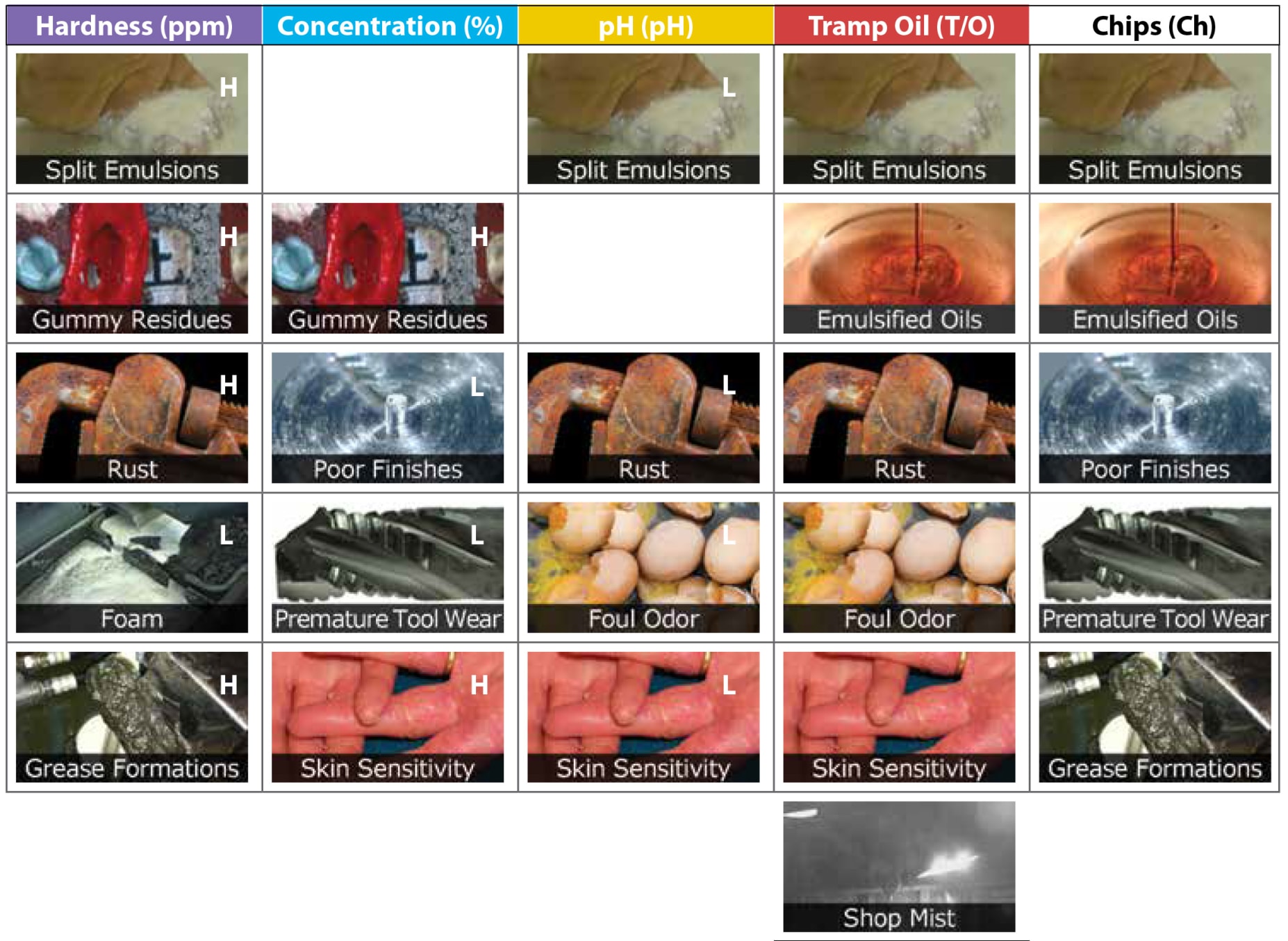This Coolant Troubleshooting Guide helps with the proper maintenance of CNC coolant. It is essential to ensure optimal machine performance and longevity. However, even with regular maintenance, coolant failures can occur. That’s why this guide is invaluable in identifying and correcting these failures.
Below you will see a visual reference system that makes it easier to identify coolant failures. The system categorizes issues as either high or low value. High-value issues can cause severe damage to your machine and require immediate attention. On the other hand, low-value issues are still important to address but need to be more critical to address. Regular maintenance can effectively manage these.
Coolant Troubleshooting Guide Factors:
One of the most common coolant failures is a foul odor emanating from the coolant. This failure can often be attributed to inadequate management of tramp oil and pH levels. To fix the issue, it is important to regularly remove excess oil. Also, you will need to oxygenate the liquid when not in use, and closely monitor the pH levels. Neglecting this issue can lead to other problems, such as split emulsions, rust, and skin sensitivity.
Another common failure is the presence of foam in the coolant. This can lead to various issues, including reduced lubrication, corrosion, and decreased tool life. When a failure occurs, it is often caused by either excessive agitation or high coolant temperatures. In order to address the problem, monitor the temperature of the coolant, decrease the amount of agitation, and use defoamers as necessary.
Other common coolant failures include discoloration, bacterial growth, and sediment buildup. The breakdown of coolant additives or the introduction of contaminants can cause discoloration. Bacterial growth is often the result of insufficient maintenance, such as irregular skimming or inadequate filtration. A lack of filtration or excessive contamination typically causes sediment buildup.
You may also be experiencing other problems that are caused by the same neglect, such as split emulsions, rust, and skin sensitivity.
Visual Guide:
H = High Value
L = Low Value

By utilizing this CNC coolant troubleshooting guide, you can identify and correct coolant failures quickly and efficiently, ensuring your machine runs smoothly and reliably. Remember to stay vigilant and perform routine maintenance to prevent issues before they occur.
***
About Zebra Skimmers:
Our mission has always been simple. It is to provide the metal working industry with the oil skimmers and metalworking fluid management systems they need to complete jobs quickly and efficiently. Innovative and affordable solutions have gained us many accolades. Our continued growth is due in no small part to our excellent customer service… Not to mention our satisfaction guarantees and the performance of our tools.
Among our diverse options of oil skimmers and metal working fluid management systems, you can expect to find:
- Coolant management equipment, which includes coolant mixers, proportioning pumps, and also coolant automation systems to mix and deliver fluid solutions at the desired concentrations.
- Industrial oil skimmers, including tramp oil belt skimmers, disk skimmers, tube oil skimmers, and individual sump coalescers as well for the removal of surface and tramp oils from fluids.
- Aeration or circulation equipment and sump odor control tablets to control fluid odor and overall machine shop smell
- Industrial fluid monitoring equipment, including brix refractometers to verify fluid solution concentrations, pH test strips and also water hardness testing sticks.

